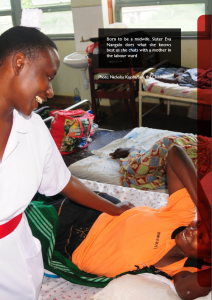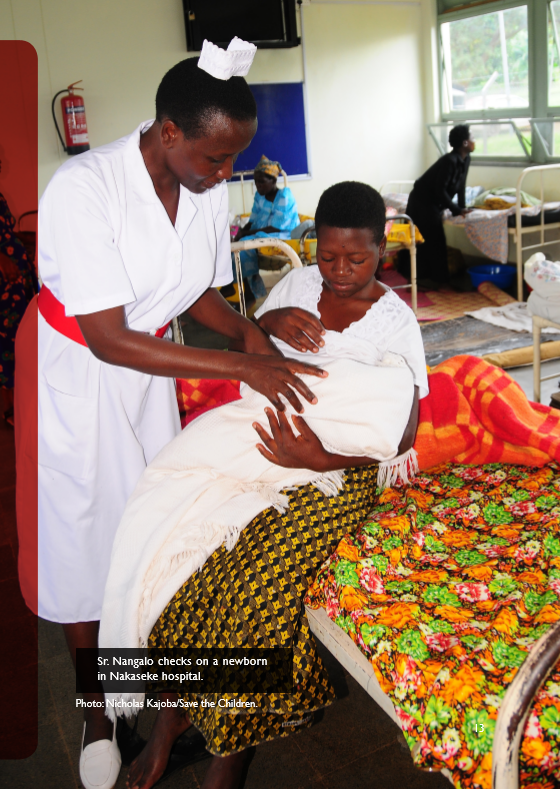This story is taken from Childbirth in Uganda: Stories from women and health workers – a collection of 10 stories about birth experiences from the perspectives of women as mothers and healthcare workers – mostly midwives. Eva Nangalo, who shares her story here, has dedicated herself to saving mothers’ and babies’ lives in a district hospital in Uganda and is a strong national and global voice for midwifery.
“I have witnessed hundreds of healthy and happy deliveries, yet I have also seen many mothers and babies die. The tragic death of a mother or baby ruins the joyful event of birth and is more vividly remembered by health workers and families. One such case was of a mother who had undergone a caesarean section less than one and a half years earlier while delivering her eighth baby.
I had misgivings about her ability to deliver this baby normally, but when I consulted the doctor he comforted me, saying the previous seven births had been normal deliveries so the mother would make it. She didn’t – she lost a lot of blood because of a ruptured uterus. As she took her last breath, she looked into my eyes and mournfully cried, ‘Midwife, my children, my children….’ That incident lives with me to this day.
Another incident I remember is of a mother called Berna, who came into the labour ward after visiting a traditional birth attendant (TBA) to induce labour with local herbs. The mother was in a lot of pain and bleeding, so the doctor quickly decided to undertake a caesarean section. She had twins, who were premature and not breathing. I grabbed the babies and ran out of the theatre towards the labour ward where our resuscitation table was, leaving the doctor with the bleeding mother on the operating table. Midway to the labour ward, there was a power cut and with no reliable standby generator, the hospital was engulfed in darkness.
To ensure that I completed my task of resuscitating the babies, I called out to a student midwife to use the ‘torch’ on my mobile phone to provide light. With no reliable source of power generation, we transferred the babies to a nearby private hospital, which had a standby generator. Since the hospital ambulance did not have fuel, the babies had to be transferred on a boda boda [motorcycle] by their father. Fortunately, the mother survived, even though she had lost a lot of blood and was quite weak. Two days later she joined her babies in the private hospital, and all survived.
Many such challenges make my job difficult. We also face frequent stockouts of essential drugs, power outages and lack of the necessary equipment to assist mothers and newborns during delivery and afterwards.”
“In spite of these challenges, I cannot leave this job. I was born a midwife. I have to be there for the mothers who come to the hospital. I need to provide them and their babies with love, care and support.”
 Blog by Stella Kigozi of Save the Children International, Uganda Office
Blog by Stella Kigozi of Save the Children International, Uganda Office
Do you know a midwife who is working to make a difference for the world’s mothers and babies? Help tell her story! Over the coming weeks leading up to the ICM triennial congress we will collect stories about midwives who are leaders in their field and champions for newborns. Send us a 300-600-word blog that include the midwife’s name, country of work, details about their career and how she or he is making a difference in the world for newborns.
Please send all blog submissions to info@healthynewbornnetwork.org. We will post blogs on HNN and our social media accounts with the hashtag #MidwivesVoices and #ICM2017.
